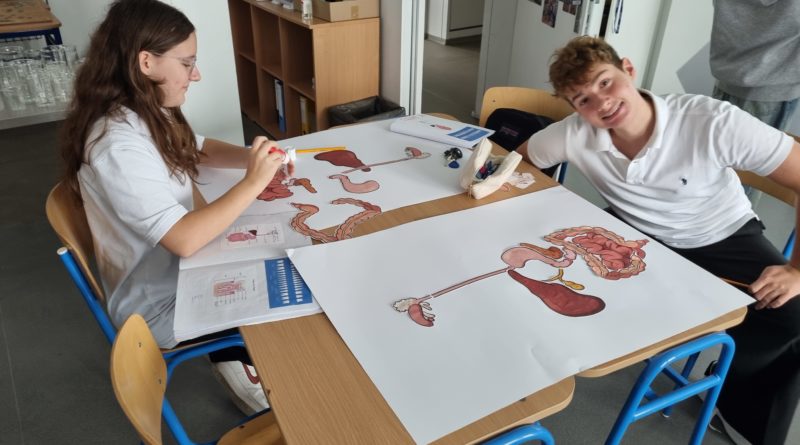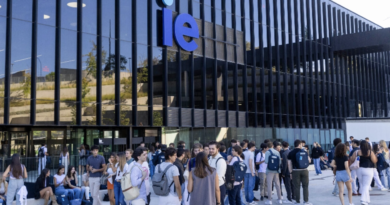“Teachers” and “Researchers” from the 9th grade
In the 9th grade, the first STEM project Body Systems Design Challenge is almost DONE. During this period, students studied in detail the microscopic structure of human tissues, the general structure of the body, the digestive, circulatory and respiratory systems.
In this article, I will briefly tell you what we did when studying the digestive system.
It should be noted that 3/4 of the time, students completed practical and project tasks. Even the study of theoretical material took place in the form of group research work. Usually, students study new material themselves. Together with Ms. Alkistis, we prepare the necessary theoretical material in advance. The class is divided into pairs or small groups. Each group receives a specific question that they must study. Everyone in the group must understand the topic. The group leader checks everyone’s readiness. The group chooses a way to present their educational material to the class, and a draw selects the student who will do it. And so on in each group. The “teacher” explains the topic, answers questions from the class, asks questions to the class. The highest number of points for this type of work was received by: Norbert, Arthur, Adam, Martin, Richard K, Richard M, Nikita, Viktoria, Lexin, Emiliia, Elly.
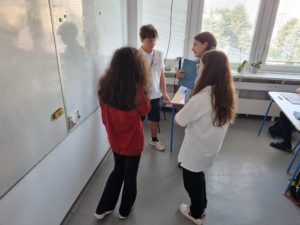
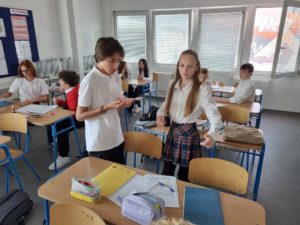
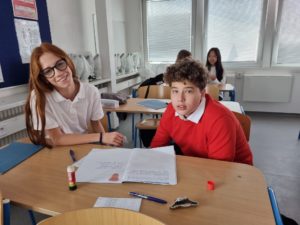
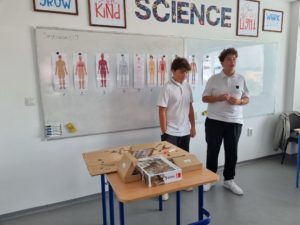
After or even during the theoretical study of the digestive system, students conducted experiments and mini projecs.
– Students created posters of the anatomical structure of the digestive system. This was not as easy as it seems. Each student received a blank A1 sheet, a set of drawn organs. It was necessary to correctly arrange the organs on the paper and label them. The highest number of points for this type of work was received by: Emmy, Emiliia, Viktoria, Adam. How this happened, you can see in these photos.
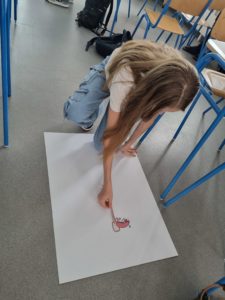
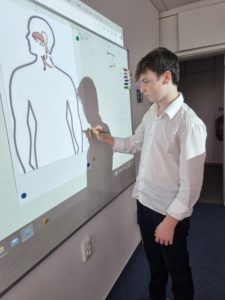
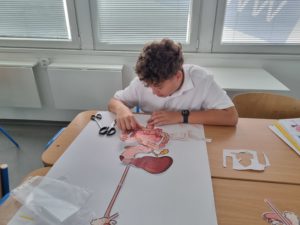


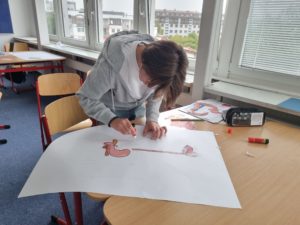
– When studying the structure of teeth, students were given the task of creating an experiment demonstrating how acid can cause damage to tooth enamel. The highest number of points for this type of work was received by: Arthur, Adam, Richard K, Richard M, Nikita. In these photos, you can see how the students actually completed their project.


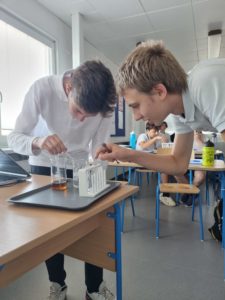

– When studying the structure of the small intestine, students were given the task of mathematically finding the surface area of the small intestine and confirming the results by creating models of the structure of the intestine. The highest number of points for this type of work was received by: Viktoria, Elly, Adam.
– When studying the processes in the stomach, we conducted an experiment with chicken bones, placing them in a hydrochloric acid solution for a day. Since the bone turned from hard to rubbery, the students realized that the acid dissolved the mineral substances of the bone, but did not affect the organic substances (protein). Straining their memory, some students (Richard K., Adam, Elly, Emmy) remembered the basics of chemistry from last year and wrote the reaction equation.
This approach of studying the material significantly increases the effectiveness of classes, and also contributes to the development of practical skills and creative thinking.
Acting as “teachers” and “researchers”, 9th grade students become more motivated, responsible, focused, creative.
And most importantly, they gradually lose their fear of making mistakes, speaking in public, and engaging in a dialogue with the class.

